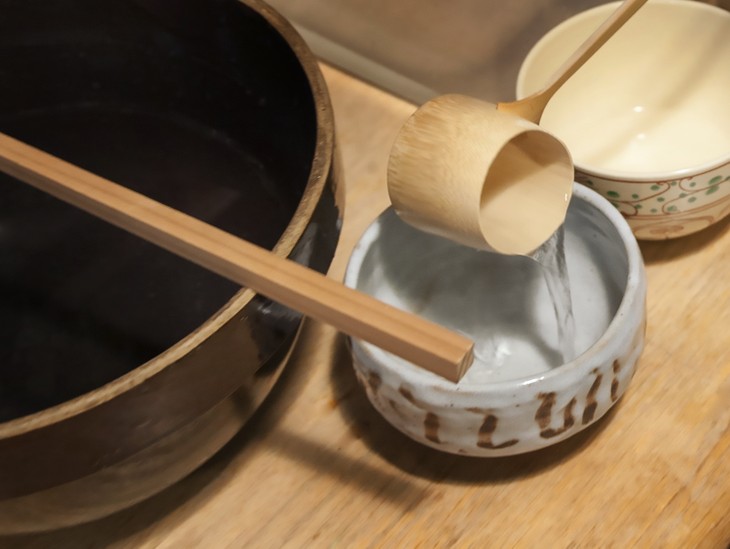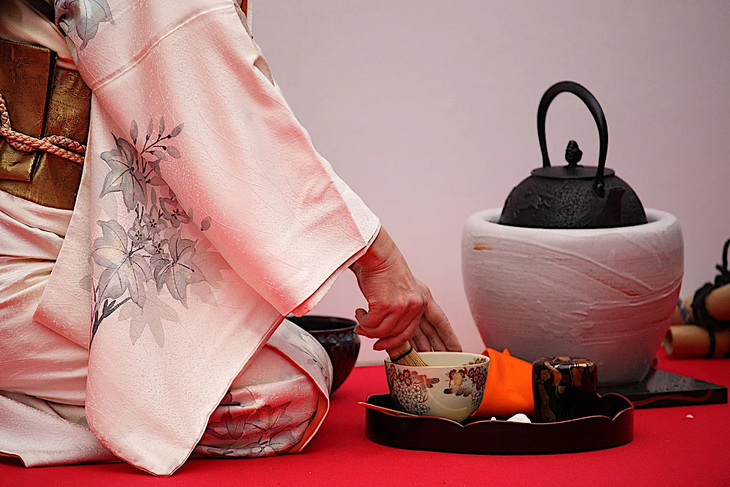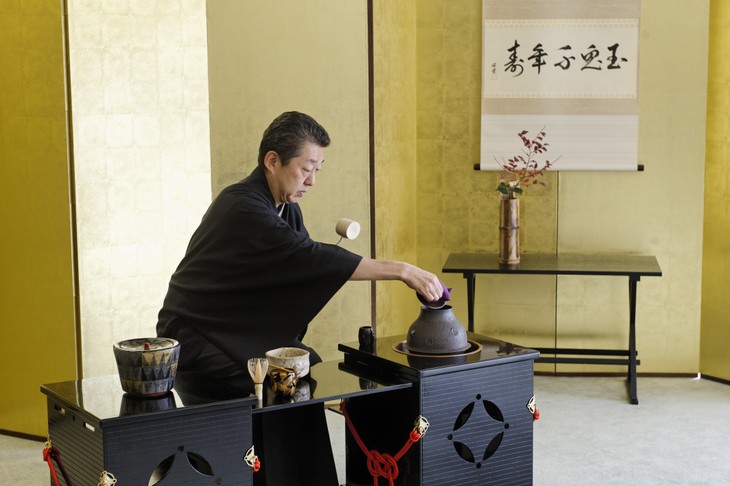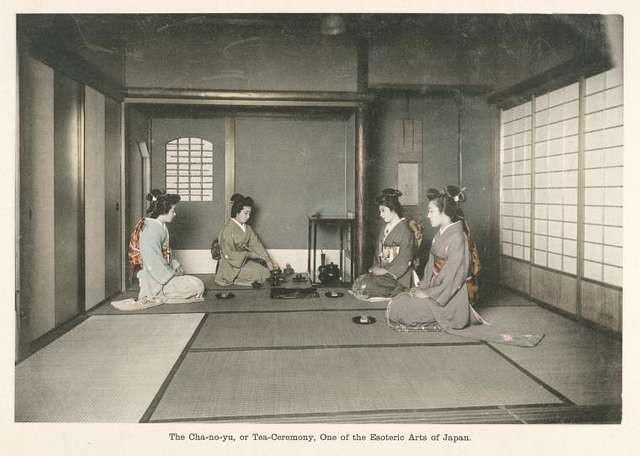(VOVWORLD) - The Japanese Tea Ceremony, also known as the Way of Tea, is a traditional ritual centered around preparing and presenting matcha, a powdered green tea.
 A hishaku (bamboo ladle) and chawan (bowl) used in the Japanese tea ceremony. Before mixing the tea, the bowl is rinsed with fresh water. (Photo: World History Encyclopedia) A hishaku (bamboo ladle) and chawan (bowl) used in the Japanese tea ceremony. Before mixing the tea, the bowl is rinsed with fresh water. (Photo: World History Encyclopedia) |
The ceremony begins with the host meticulously purifying the tea utensils, including the tea bowl (chawan), tea whisk (chasen), and tea scoop (chashaku). This act in front of the guests symbolizes purity and respect, setting a tone of reverence for the entire ceremony.
The host then prepares the tea by whisking matcha powder with hot water in the tea bowl. Noriko Nishino, a researcher of Asian Culture, said that drinking tea (from matcha powder) was introduced in the late 12th century during the Song dynasty.
“Initially, the monks drank the tea to stay awake while meditating. Soon different types of tea began to be compared, and it became popular for the tea drinkers to try to guess which type of tea they had consumed. In the 15th century, a form of the tea ceremony called 'Chanoyu' was established. Murata Jukō, considered the founder of the tea ceremony, was actively involved,” she said.
 Matcha powder is whisked in the purified bowl with hot water. (Photo: Wikimedia Commons) Matcha powder is whisked in the purified bowl with hot water. (Photo: Wikimedia Commons) |
The prepared tea is presented to the principal guest, who bows in gratitude before taking a sip. The bowl is wiped clean and passed to the next guest, creating a shared experience that fosters a sense of community and togetherness among the participants. The gentle clinking of tea utensils and the soft rustle of kimono fabric create an ambiance of tranquility where each gesture is steeped in centuries-old tradition.
Noriko said that the tea ceremony was practiced not only by samurai, nobility, and the court but also by merchants who had gained power.
“Merchants who participated in overseas trade used items they imported, considered suitable for the tea ceremony, as tea preparation tools. This was the era of Takeno Jōō, followed by his disciple Sen no Rikyū. The tea ceremony was not only performed at tea gatherings but also played a role in the political world,” she said.
 A tea ceremony for Yoshihiko Noda, former Prime Minister of Japan on December 4, 2011. (Photo: Marcel Crozet/ILO/Creative Commons - Attribution-NonCommercial-NoDerivs 2.0 Generic) A tea ceremony for Yoshihiko Noda, former Prime Minister of Japan on December 4, 2011. (Photo: Marcel Crozet/ILO/Creative Commons - Attribution-NonCommercial-NoDerivs 2.0 Generic) |
The tea ceremony, reflecting the Japanese values of harmony, respect, purity, and tranquility, plays an important role in social interactions and illustrates a significant feature of Japanese architecture and lifestyle: simple sophistication. The primary meaning of the Japanese tea ceremony is not in the enjoyment of the tea but, through the preparation, mixing, and rituals, in calming and purifying the soul.
Noriko Nishino said that the tea ceremony is considered a comprehensive art form in Japan. It’s seen as a convergence of various aesthetics – tea, ceramics, lacquerware, flowers, calligraphy, hanging scrolls, Zen, and tea rooms. All of these express the beauty of the season.
“The tea room is designed to be cool in summer and warm in winter. In the mid-16th century, Cha Suuki (to enjoy the tea ceremony by possessing various utensils with a sense of beauty) became popular, and tea rooms were reduced to just under 3 square meters. These very small rooms became the standard. The smaller the room, the closer you are to others, creating a more intimate atmosphere,” she said.
 A typical Japanese tea room dated 1910-1919. (Photo: Creative Commons) A typical Japanese tea room dated 1910-1919. (Photo: Creative Commons) |
The Japanese tea ceremony serves as a medium for cultivating interpersonal relationships and demonstrating hospitality, bridging the personal and communal spheres, said Noriko.
“I’ve practiced the tea ceremony since I was a child and I want to become a tea ceremony teacher. However, when I said that to my teacher, she said the tea ceremony is a teacher of life, so one must have a lot of experience,” she said.
“Making tea well is not enough. There is not just one way of tea. Every person has their own way of tea, just as every person has their own life. I learned that the most important thing is to live according to the spirit of the tea ceremony, not just in the tea room, but in everyday life.”